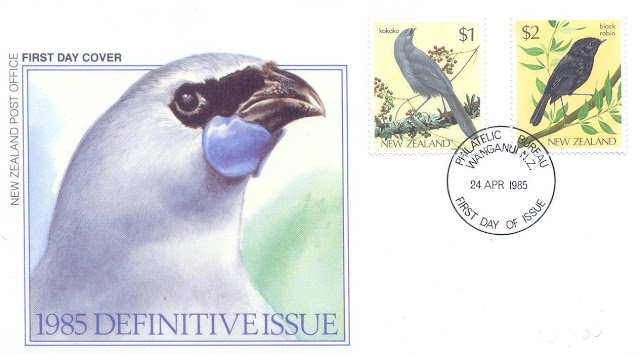Rita Angus (12 March 1908 – 25 January 1970) was a New Zealand painter born in Hastings. Along with Colin
McCahon and Toss Woollaston, she is credited as one of the leading figures in twentieth century New Zealand art. She worked primarily in oil and water colours, and
is well known for her portraits and landscapes.
This issue of stamps featured the works of Rita Angus whose
meticulous compositions in oil and water-colours earned her the reputation as a
leader of the modern school of New Zealand painting. Rita Angus, born in
Hastings, trained as a painter in Christchurch where she lived until 1954 when
she moved northwards to settle in Wellington. During her career she
made frequent painting trips throughout New Zealand, especially to Central Otago,
Waikanae and Hawke's Bay.
A brief descriprtion about the stamps on the cover and the
paintings depicted on them is given below.
Boats - Island Bay - 24c
Painted 1962-63, an oil 610mm x 610mm - belongs to a private collection in Auckland. The Italian fishing boats at Island Bay, Wellington emphasised the complex pattern of shapes and colours created by the moored boats.
Painted 1962-63, an oil 610mm x 610mm - belongs to a private collection in Auckland. The Italian fishing boats at Island Bay, Wellington emphasised the complex pattern of shapes and colours created by the moored boats.
Central Otago Landscape - 30c
Painted 1954/65/1969, an oil 524mm x 636mm - hangs in the National Art Gallery, Wellington. The "composite" landscape in Central Otago was made up of separate views recorded first in water-colours. These range from Lake Wakatipu and the Remarkables to Cromwell and Alexandra. It was begun in the 1950s and completed in 1969.
Painted 1954/65/1969, an oil 524mm x 636mm - hangs in the National Art Gallery, Wellington. The "composite" landscape in Central Otago was made up of separate views recorded first in water-colours. These range from Lake Wakatipu and the Remarkables to Cromwell and Alexandra. It was begun in the 1950s and completed in 1969.
Wanaka Landscape - 35c
Painted 1939, a watercolour 228mm x 276mm - hangs in the Rita Angus Loan Collection, National Art Gallery, Wellington. Vivid colours and clearly defined forms were hallmarks of Rita Angus' style and these feature in her Wanaka landscape.
Painted 1939, a watercolour 228mm x 276mm - hangs in the Rita Angus Loan Collection, National Art Gallery, Wellington. Vivid colours and clearly defined forms were hallmarks of Rita Angus' style and these feature in her Wanaka landscape.
Tree - 45c
Painted 1943, a watercolour 300mm x 286mm - hangs in the Rita Angus Loan Collection, National Art Gallery, Wellington. Rita Angus made numerous water-colour studies of flowers and plants and in 1943 painted a tree which grew in her sister's garden in Greymouth.
Painted 1943, a watercolour 300mm x 286mm - hangs in the Rita Angus Loan Collection, National Art Gallery, Wellington. Rita Angus made numerous water-colour studies of flowers and plants and in 1943 painted a tree which grew in her sister's garden in Greymouth.
These four stamps on the cover honour Rita
Angus and her paintings depicted on the stamps. Thank you Maria for
this pretty FDC.





























